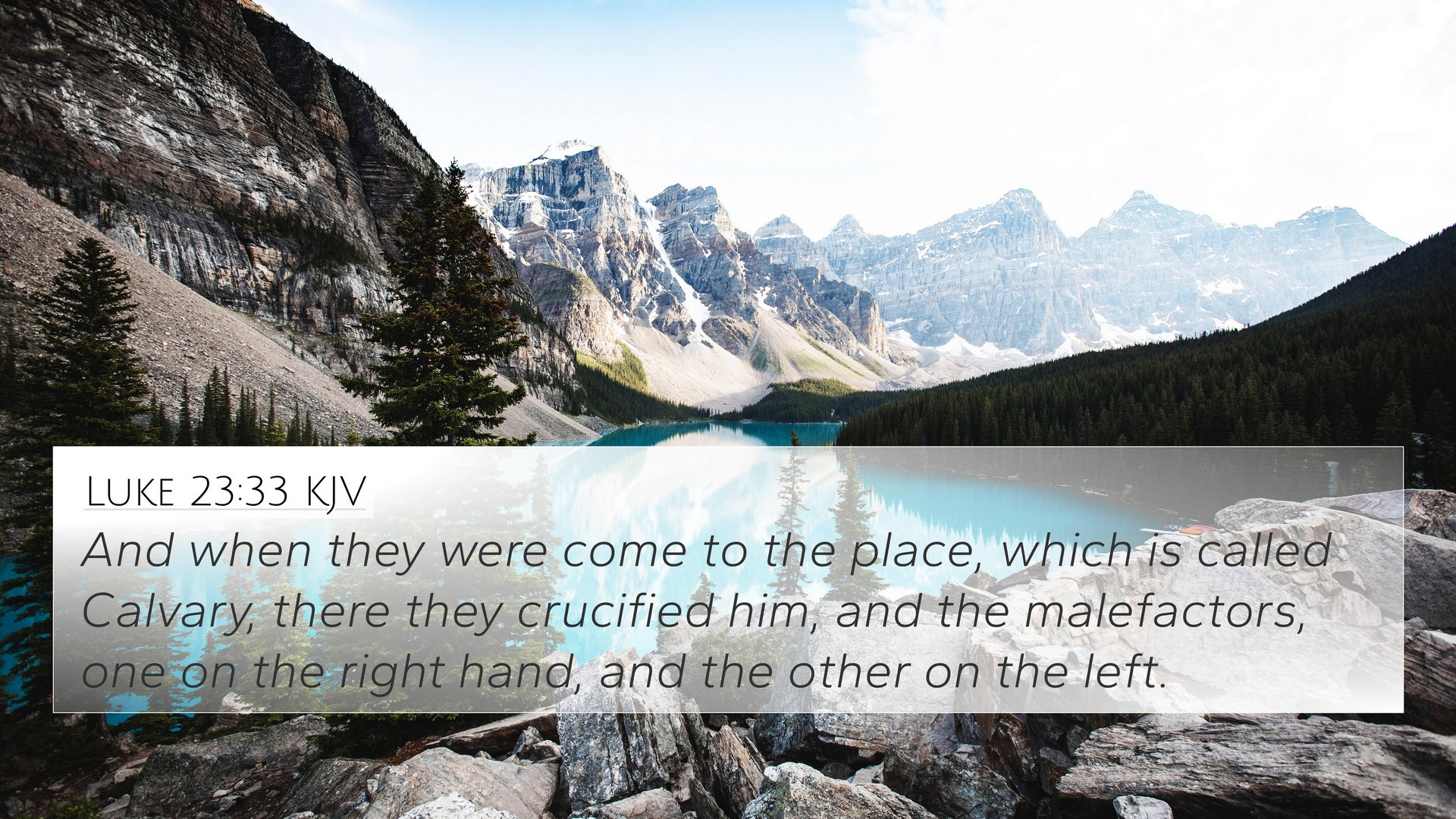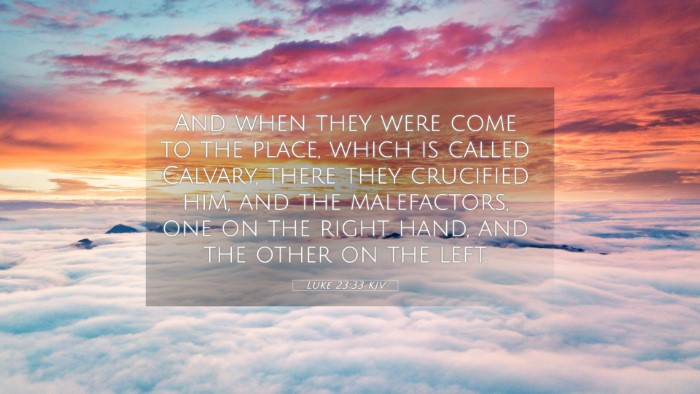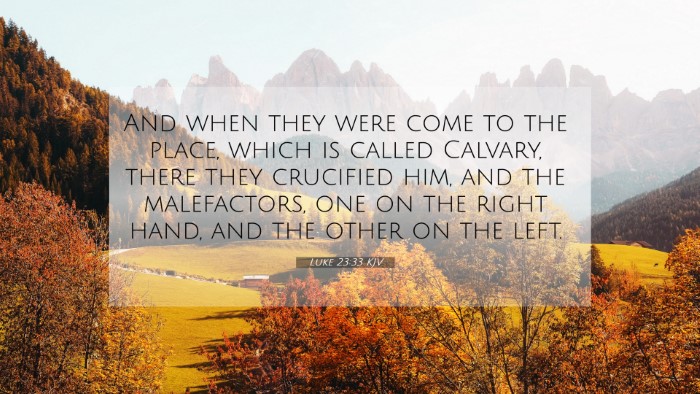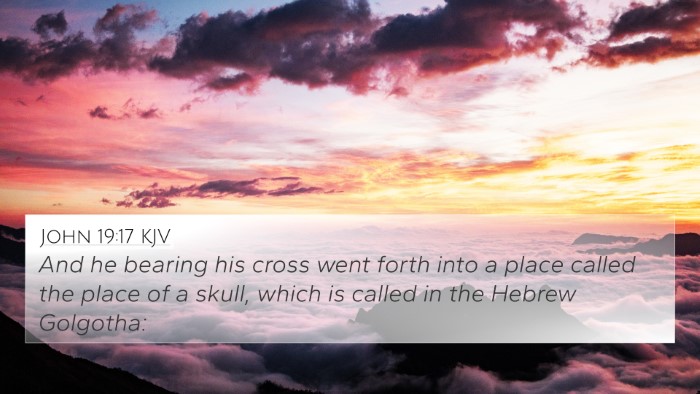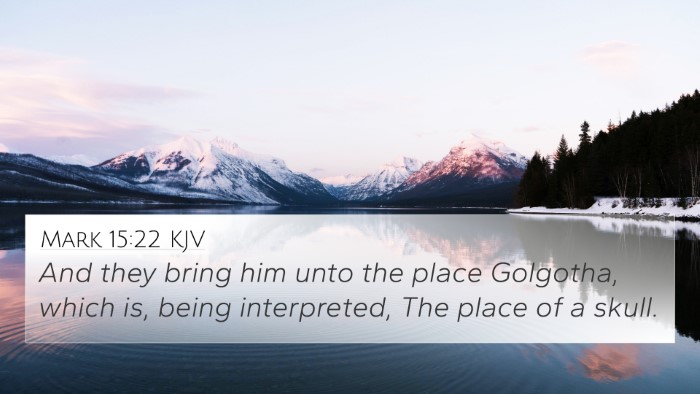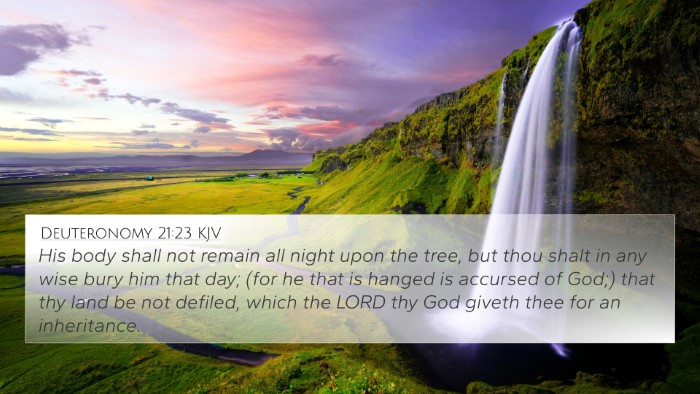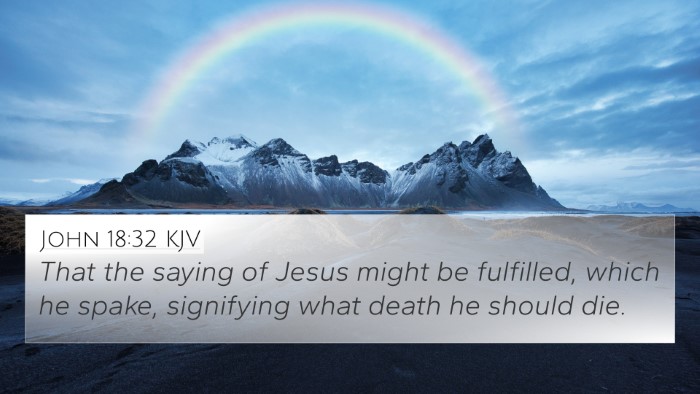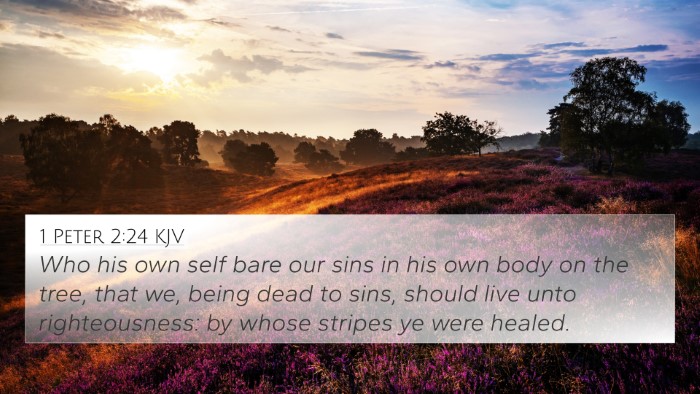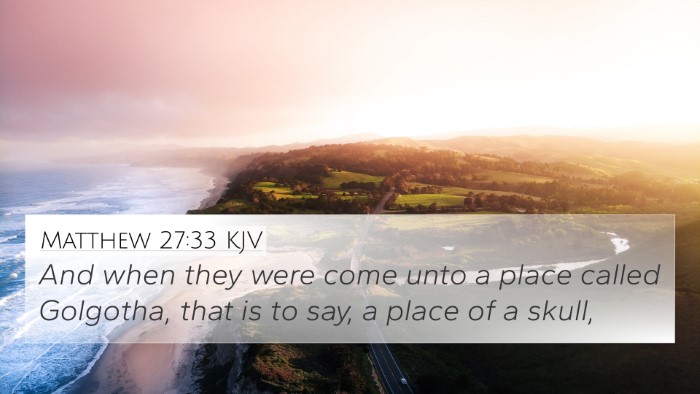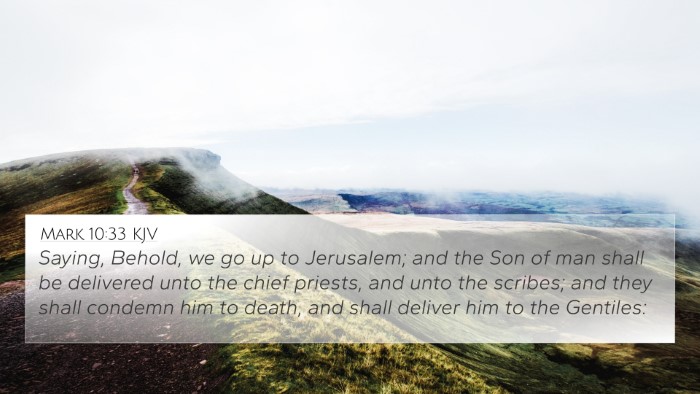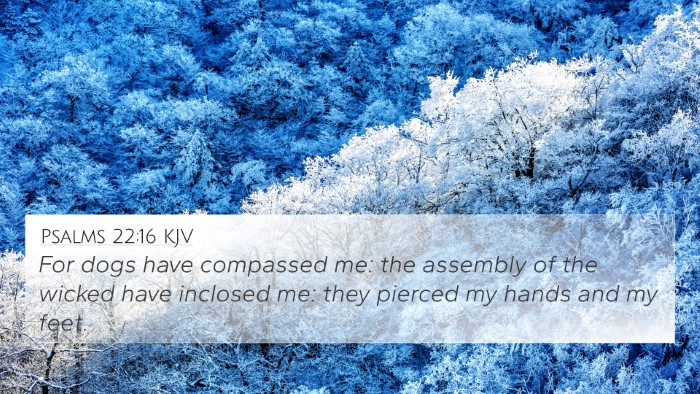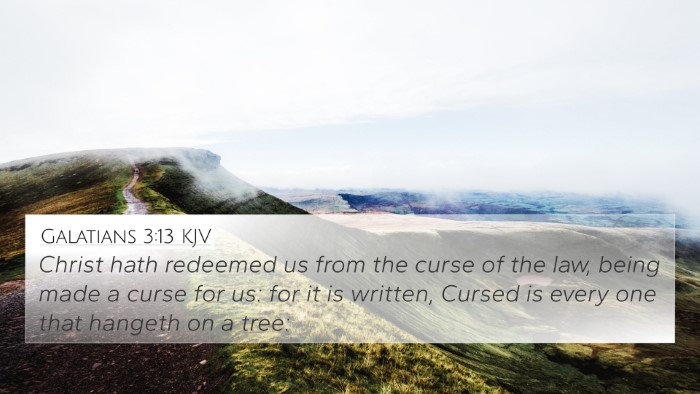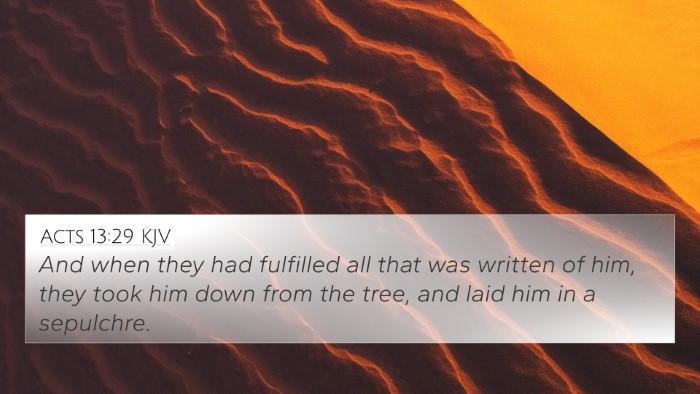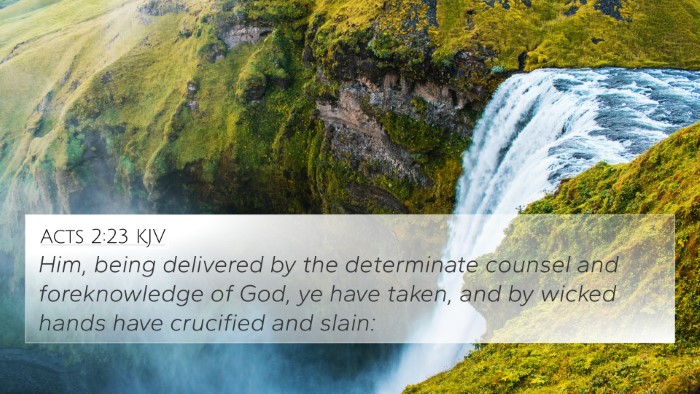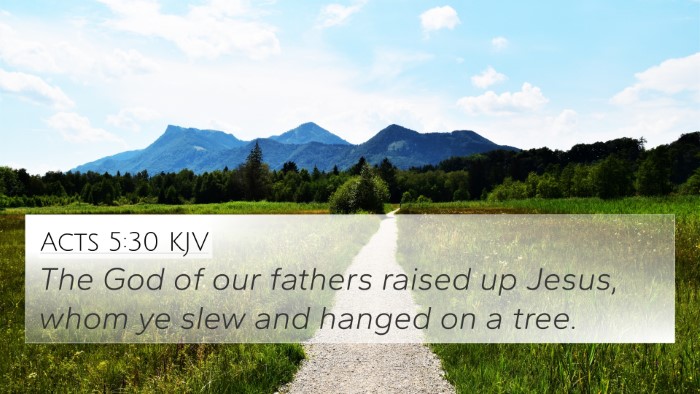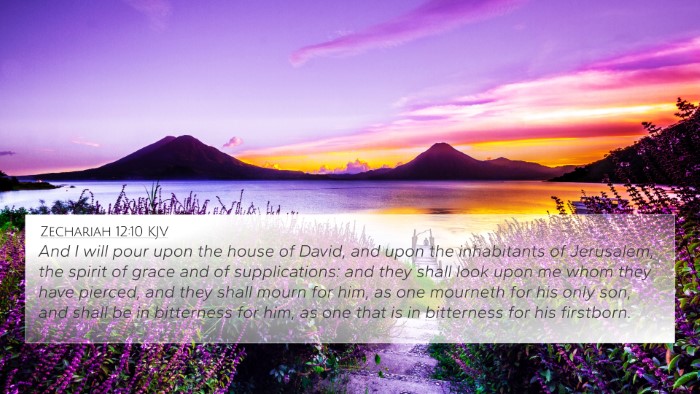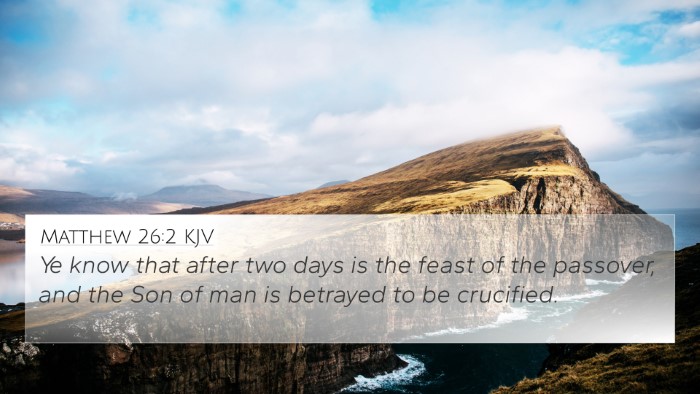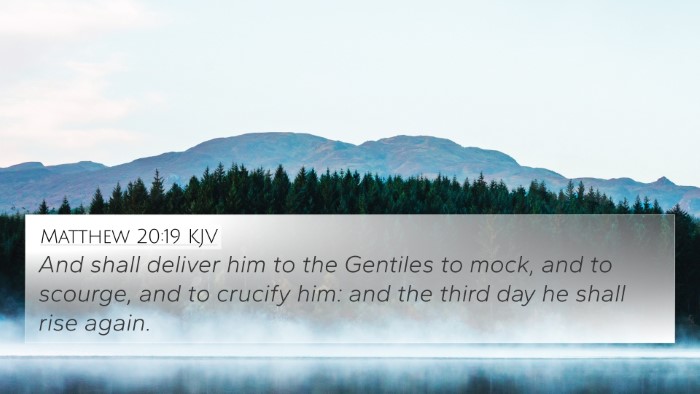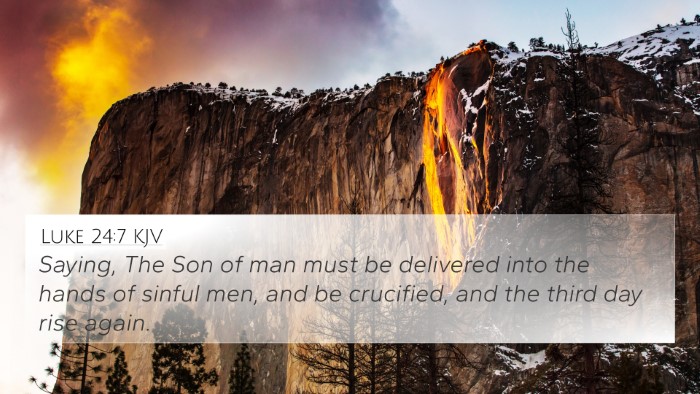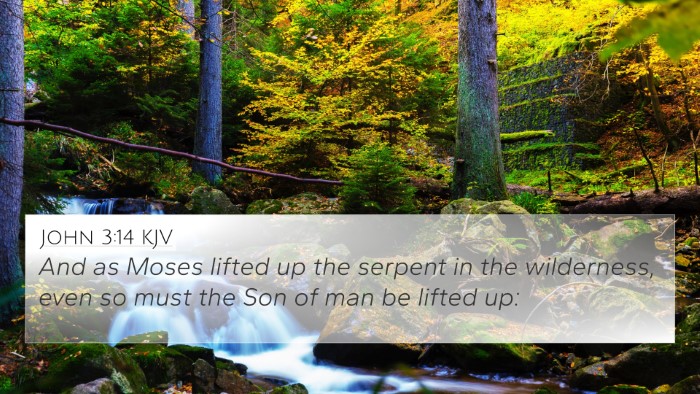Understanding Luke 23:33
Luke 23:33 states: "And when they were come to the place, which is called Calvary, there they crucified him, and the malefactors, one on the right hand, and the other on the left."
This verse marks a significant moment in the New Testament, depicting the crucifixion of Jesus Christ. The crucifixion is not just an event; it encapsulates profound themes of sacrifice, redemption, and God's love towards humanity.
Contextual Analysis
According to Matthew Henry, the mention of "Calvary" (or Golgotha) highlights the fulfillment of prophetic scripture concerning the Messiah's suffering. Profoundly, this place is marked not just as a physical site of Jesus’ execution but as a critical juncture in salvation history where humanity's reconciliation to God is acclaimed.
Albert Barnes provides insight into the term "malefactors," referring to criminals executed alongside Jesus. Their presence emphasizes the innocence of Christ contrasted with their guilt, mirroring biblical themes of substitutionary atonement, where Jesus takes on the sin of humanity.
In the works of Adam Clarke, it is noted that the act of crucifixion fulfills multiple Old Testament prophecies, specifically concerning the suffering servant depicted in Isaiah. The positioning of the malefactors on either side of Jesus serves to symbolize the choice confronting humanity – acceptance or rejection of Christ as Savior.
Thematic Connections in Luke 23:33
-
Prophetic Fulfillment: This verse relates back to Isaiah 53:5, which speaks of the suffering of the Messiah for the sins of many.
-
Crucifixion Imagery: Inter-textually, it connects to Psalm 22, illustrating the agony and mockery experienced during Jesus' crucifixion.
-
Symbolism of the Cross: The crucifixion stands central to the Christian doctrine, symbolizing both death to sin and the nature of self-sacrifice (Matthew 16:24).
-
Dual Nature of Humanity: The placement of the two criminals signifies the dichotomy of acceptance and rejection of Jesus, reflecting the messages encapsulated in John 3:18.
-
Death and Redemption: This event further connects to Romans 5:8, depicting how Christ died for the ungodly, revealing God's love.
-
Judgment and Forgiveness: The scene draws a parallel to the judgment Jesus pronounced on the cross, as depicted in Luke 23:34 ("Father, forgive them...").
-
The Kingdom of God: The crucifixion prefaces the resurrection, which ties together the promise of eternal life found in John 3:16.
Cross-Referencing Biblical Texts
Utilizing a bible cross-reference guide is immensely beneficial for understanding connections between scripture. Below are notable cross-references related to Luke 23:33:
- Matthew 27:38 – Discusses the crucifixion of Jesus alongside two thieves, reinforcing the narrative consistency across the Gospels.
- Mark 15:27-28 – Mentions the same crucifixion setting, tying Jesus' death to prophecies about the Messiah being numbered among the transgressors.
- Isaiah 53:12 – Prophecies the suffering servant bearing the sins of many, directly connected to the context of the crucifixion.
- Hebrews 9:28 – Reflects on how Christ was offered once to bear the sins of many, enhancing the significance of His sacrifice.
- 1 Peter 2:24 – Highlights the concept of bearing sins in His own body on the tree, closely linked to the crucifixion account.
- John 19:18 – Provides further detail on the event, underscoring its pivotal role in the Passion narrative.
- Galatians 3:13 – Discusses Jesus being made a curse for us, aligning well with themes arising from Luke 23:33.
Comparative Bible Verse Analysis
In the realm of comparative Bible verse analysis, Luke 23:33 serves as a vital point of intersection for various themes, including the fulfillment of Old Testament prophecy, the concept of sacrificial love, and the establishment of the new covenant through Christ's death.
Tools for Bible cross-referencing, such as a concordance or a dedicated bible cross-reference system, can illuminate these connections further. Engaging in cross-referencing Bible study methods can deepen one's understanding of how individual verses resonate with one another throughout scripture.
Conclusion
The crucifixion event, as seen in Luke 23:33, serves as a cornerstone in Christian theology, representing ultimate sacrifice and love. By exploring the nuances in this verse and cross-referencing it with other biblical texts, viewers can gain profound insight into God's redemptive plan for humanity. In learning how to use Bible cross-references, one can grasp the extensive tapestry of divine providence interwoven throughout both the Old and New Testaments.
As Christians seek to grow in their faith, understanding verses like Luke 23:33 and its inter-biblical dialogues not only enriches their study but nourishes their spiritual journeys, illustrating the beautiful coherence of God's Word.
